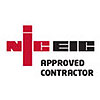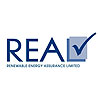ECODAN Questions & Answers
What sort of properties is suitable for an air source heat pump?
Air source heat pumps are a suitable complete or partial solution for the majority of existing houses as well as new builds. Most properties that can achieve a reasonable level of thermal insulation could be suitable for an air source heat pump. In order to achieve the highest levels of efficiencies, all properties should have been updated with the basic thermal improvements i.e. cavity wall installation, loft insulation and double glazing. The air source heat pump then needs to be able to meet the maximum heat demand of the property under its maximum (coldest) conditions.
Are there any particular parts of the UK housing market for which the air source heat pump is most/least suitable?
In parts of the country which are off the gas network, there are households who simply cannot afford the huge bills needed to fill their oil tanks, and who also then worry about the rise in theft of this precious commodity. The volatile domestic heating oil market in the UK makes the installation of an air source heat pump commercially compelling. Another point worth considering is that significant numbers of those in fuel poverty* live in off-gas grid locations, hence their status, and the widespread adoption of this technology would significantly help this demographic. Homes having to meet higher levels of the Code for Sustainable Homes are also particularly well suited as using an Ecodan can help achieve code level 3 and beyond.*A household is said to be in fuel poverty if it needs to spend more than 10% of its income on fuel to maintain a satisfactory heating regime" - DECC
Can an air source heat pump be used in conjunction with other technologies?
Yes, with suitable control systems, air source heat pumps can be operated to act in either a lead or support mode with any other fossil or renewable heating technology.
Why are air source heat pumps not covered in 'permitted planning'?
We are still waiting for the Government (despite confirmation even from the Prime Minster that all relevant decisions have been made) to publish the noise thresholds required for air source heat pumps within the General Permitted Development Order.
Will Ecodan work in my home?
The heat loss of your home needs to be calculated to ensure that Ecodan will give sufficient space heating. As a guide a modern house has a heat loss of approximately 50W/m2. So Ecodan would be able to heat a home up to 180m2 (based on a 9kW output). Careful consideration with older buildings needs to be taken, the heat loss of these homes can be much higher than in modern well insulated properties.
How do I buy an Ecodan system?
Ecodan needs to be bought and installed by an Accredited Ecodan Installer with the right qualifications. Mitsubishi Electric can provide you with details of your nearest installer.
How much will installation cost me?
Installation costs vary from property to property, but as a guide, costs will be similar to that of a conventional gas boiler. A competent installer should take 1 - 2 days to install and set up the Ecodan system. For new build, as no gas supply is required, costs are actually cheaper.
How easy is it to install Ecodan?
Many house builders are installing Ecodan in new homes. If you have an older property, Ecodan is straightforward to fit and one of our Accredited Ecodan Installers will take 1 to 2 days to install and set it up. Unless the property is over 30 years old, the existing radiators can potentially be used. Our specially trained installers will give all the advice needed.
How can I ensure Ecodan has been installed correctly?
The following items are crucial for a satisfactory installation and your Accredited Ecodan Installer should be aware of these: Unit Location Pipe work Insulation Anti Vibration Mounts Anti Vibration Connections (flexible hose, supplied loose) Consideration in retrofit situations Frost Protection of system Condensate removal See Install manual for full description of these points Always use an Accredited Ecodan Installer - for your nearest Accredited Ecodan Installer please go to the 'Find an Accredited Ecodan Installer' page.
How much space do I need for the Ecodan outdoor unit?
Ecodan is approximately 950mm tall by 950mm wide and has a depth of 330mm. Sufficient ventilation space is required at the front of the unit (1m) and at the back of the unit (250mm).
Where does my gas boiler go in the installation?
There is no need to have a gas or oil fired boiler in an Ecodan installation.
Do I need planning permission?
Yes all outdoor units of this type require planning permission.
Can I put a heat pump in the loft space - can I do this with Ecodan?
Unless the property has been specifically designed to incorporate a heat pump in the loft space we would not recommend this type of installation. A heat pump in heating mode will generate large volumes of very cold air. This could affect the temperature of any enclosed space (unless the heat pump is completely ducted to outside). In addition heat pumps do generate a small amount of vibration. Unless very carefully designed the inclusion of a heat pump in a loft space could cause occupant disturbance. Provision for condensate removal would also have to be made.
What capacity is Ecodan, and what electrical power do I need?
Ecodan can provide 5kW to 14kW of heating load. As it has been designed for the domestic market single phase power is suitable, a 3-phase system on the 14kW system is also available.
Will Ecodan work with my existing radiators?
New build properties will have the radiators correctly sized for Ecodan. For retrofit applications in newer homes, existing radiators are likely to be of suitable size and performance to cope with the lower flow temperatures provided from Ecodan. In older homes with older radiators this may not be the case. In all installations Mitsubishi Electric would recommend checking design of all radiators. Before installing Ecodan - additional or larger new radiators may be required. A radiator design sizing tool is available from Mitsubishi Electric.
Do I need low surface temperature radiators?
Low surface temperature radiators are not needed. These radiators work with conventional high temperature systems and the low surface temperature is a safety feature to prevent burns.
What kind of protection do I need for my sanitary hot water?
WRAS (Water Regulation Advisory Scheme) guidelines state that hot water needs to be stored above 60oC and distributed at no less than 55oC to prevent microbial growth (legionella). However, in recommendations it states that hot water should be distributed less than 50oC to avoid risk of scolding. Under G18.5 of the Water Regulations, terminal fittings or communal showers should be supplied through thermostatic mixing valves so water temperatures do not exceed 43oC.
Ecodan has built in controls to perform the prevention of microbial growth (legionella) by weekly boosting the water temperature to over 60oC to sanitise the system, therefore water can be stored at lower temperatures for maximum efficiency.
Are there any special requirements during winter?
During the cold spell please ensure the correct amount of inhibitor is put in the system to prevent it from freezing. Recommended inhibitors are Fernox ALPH11 or Sentinel X500.
Is it possible to combine radiators and underfloor heating in the same system?
Yes. The water flowing through the radiator circuit will be the same temperature as the water flowing through the under floor heating circuit. The radiators will need to be sized using the water temperature of the under floor heating circuit.
Can Ecodan be linked to a solar thermal system to provide 'automatic' switching between the two (e.g. the heat pump will only kick in for hot water generation if the solar is not effective or has raised stored water temperatures as far as it can due to weather conditions)?
Solar thermal can be incorporated into a heat pump system using a twin coil cylinder. The solar output heats the tank during the day leaving any difference between actual and desired tank temperature to the heat pump during its programmed heat up time. An accumulator can also be used in conjunction with an unvented cylinder, which is popular in solar thermal systems to ensure higher use of energy available.
Can Ecodan be connected to a thermalstore or a buffer store and if not recommended why?
Buffer vessels are normally used with fixed speed compressor heat pumps because of the inefficiencies of the unit in constantly turning fully on and off. Inverter driven compressors such as the Ecodan alleviate the need for such a vessel as they can vary their output between on and off, therefore delivering the output required. Heat pumps can be used in conjunction with thermal stores and many manufacturers produce these with heat pump and solar thermal functionality in mind.
Air source heat pumps are a suitable complete or partial solution for the majority of existing houses as well as new builds. Most properties that can achieve a reasonable level of thermal insulation could be suitable for an air source heat pump. In order to achieve the highest levels of efficiencies, all properties should have been updated with the basic thermal improvements i.e. cavity wall installation, loft insulation and double glazing. The air source heat pump then needs to be able to meet the maximum heat demand of the property under its maximum (coldest) conditions.
Are there any particular parts of the UK housing market for which the air source heat pump is most/least suitable?
In parts of the country which are off the gas network, there are households who simply cannot afford the huge bills needed to fill their oil tanks, and who also then worry about the rise in theft of this precious commodity. The volatile domestic heating oil market in the UK makes the installation of an air source heat pump commercially compelling. Another point worth considering is that significant numbers of those in fuel poverty* live in off-gas grid locations, hence their status, and the widespread adoption of this technology would significantly help this demographic. Homes having to meet higher levels of the Code for Sustainable Homes are also particularly well suited as using an Ecodan can help achieve code level 3 and beyond.*A household is said to be in fuel poverty if it needs to spend more than 10% of its income on fuel to maintain a satisfactory heating regime" - DECC
Can an air source heat pump be used in conjunction with other technologies?
Yes, with suitable control systems, air source heat pumps can be operated to act in either a lead or support mode with any other fossil or renewable heating technology.
Why are air source heat pumps not covered in 'permitted planning'?
We are still waiting for the Government (despite confirmation even from the Prime Minster that all relevant decisions have been made) to publish the noise thresholds required for air source heat pumps within the General Permitted Development Order.
Will Ecodan work in my home?
The heat loss of your home needs to be calculated to ensure that Ecodan will give sufficient space heating. As a guide a modern house has a heat loss of approximately 50W/m2. So Ecodan would be able to heat a home up to 180m2 (based on a 9kW output). Careful consideration with older buildings needs to be taken, the heat loss of these homes can be much higher than in modern well insulated properties.
How do I buy an Ecodan system?
Ecodan needs to be bought and installed by an Accredited Ecodan Installer with the right qualifications. Mitsubishi Electric can provide you with details of your nearest installer.
How much will installation cost me?
Installation costs vary from property to property, but as a guide, costs will be similar to that of a conventional gas boiler. A competent installer should take 1 - 2 days to install and set up the Ecodan system. For new build, as no gas supply is required, costs are actually cheaper.
How easy is it to install Ecodan?
Many house builders are installing Ecodan in new homes. If you have an older property, Ecodan is straightforward to fit and one of our Accredited Ecodan Installers will take 1 to 2 days to install and set it up. Unless the property is over 30 years old, the existing radiators can potentially be used. Our specially trained installers will give all the advice needed.
How can I ensure Ecodan has been installed correctly?
The following items are crucial for a satisfactory installation and your Accredited Ecodan Installer should be aware of these: Unit Location Pipe work Insulation Anti Vibration Mounts Anti Vibration Connections (flexible hose, supplied loose) Consideration in retrofit situations Frost Protection of system Condensate removal See Install manual for full description of these points Always use an Accredited Ecodan Installer - for your nearest Accredited Ecodan Installer please go to the 'Find an Accredited Ecodan Installer' page.
How much space do I need for the Ecodan outdoor unit?
Ecodan is approximately 950mm tall by 950mm wide and has a depth of 330mm. Sufficient ventilation space is required at the front of the unit (1m) and at the back of the unit (250mm).
Where does my gas boiler go in the installation?
There is no need to have a gas or oil fired boiler in an Ecodan installation.
Do I need planning permission?
Yes all outdoor units of this type require planning permission.
Can I put a heat pump in the loft space - can I do this with Ecodan?
Unless the property has been specifically designed to incorporate a heat pump in the loft space we would not recommend this type of installation. A heat pump in heating mode will generate large volumes of very cold air. This could affect the temperature of any enclosed space (unless the heat pump is completely ducted to outside). In addition heat pumps do generate a small amount of vibration. Unless very carefully designed the inclusion of a heat pump in a loft space could cause occupant disturbance. Provision for condensate removal would also have to be made.
What capacity is Ecodan, and what electrical power do I need?
Ecodan can provide 5kW to 14kW of heating load. As it has been designed for the domestic market single phase power is suitable, a 3-phase system on the 14kW system is also available.
Will Ecodan work with my existing radiators?
New build properties will have the radiators correctly sized for Ecodan. For retrofit applications in newer homes, existing radiators are likely to be of suitable size and performance to cope with the lower flow temperatures provided from Ecodan. In older homes with older radiators this may not be the case. In all installations Mitsubishi Electric would recommend checking design of all radiators. Before installing Ecodan - additional or larger new radiators may be required. A radiator design sizing tool is available from Mitsubishi Electric.
Do I need low surface temperature radiators?
Low surface temperature radiators are not needed. These radiators work with conventional high temperature systems and the low surface temperature is a safety feature to prevent burns.
What kind of protection do I need for my sanitary hot water?
WRAS (Water Regulation Advisory Scheme) guidelines state that hot water needs to be stored above 60oC and distributed at no less than 55oC to prevent microbial growth (legionella). However, in recommendations it states that hot water should be distributed less than 50oC to avoid risk of scolding. Under G18.5 of the Water Regulations, terminal fittings or communal showers should be supplied through thermostatic mixing valves so water temperatures do not exceed 43oC.
Ecodan has built in controls to perform the prevention of microbial growth (legionella) by weekly boosting the water temperature to over 60oC to sanitise the system, therefore water can be stored at lower temperatures for maximum efficiency.
Are there any special requirements during winter?
During the cold spell please ensure the correct amount of inhibitor is put in the system to prevent it from freezing. Recommended inhibitors are Fernox ALPH11 or Sentinel X500.
Is it possible to combine radiators and underfloor heating in the same system?
Yes. The water flowing through the radiator circuit will be the same temperature as the water flowing through the under floor heating circuit. The radiators will need to be sized using the water temperature of the under floor heating circuit.
Can Ecodan be linked to a solar thermal system to provide 'automatic' switching between the two (e.g. the heat pump will only kick in for hot water generation if the solar is not effective or has raised stored water temperatures as far as it can due to weather conditions)?
Solar thermal can be incorporated into a heat pump system using a twin coil cylinder. The solar output heats the tank during the day leaving any difference between actual and desired tank temperature to the heat pump during its programmed heat up time. An accumulator can also be used in conjunction with an unvented cylinder, which is popular in solar thermal systems to ensure higher use of energy available.
Can Ecodan be connected to a thermalstore or a buffer store and if not recommended why?
Buffer vessels are normally used with fixed speed compressor heat pumps because of the inefficiencies of the unit in constantly turning fully on and off. Inverter driven compressors such as the Ecodan alleviate the need for such a vessel as they can vary their output between on and off, therefore delivering the output required. Heat pumps can be used in conjunction with thermal stores and many manufacturers produce these with heat pump and solar thermal functionality in mind.











